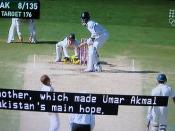Abstract:The efficient capital market paper from Fama (1991) is a sequel from Fama efficient capital market 20 years earlier. While the topic in the seventies was rather new, 20 years later the literature has offers a broad knowledge about this theme.
Introduction:There are two versions of market efficiency, the strong version and the sensible version. The extreme version assumes that securities prices reflect all available information. It implies that trading cost and price of getting the information are zero. The sensitive version says that "price reflect information to the point where the marginal benefit of acting on information (the profits to be made) do not exceed the marginal costs" (Fama, 1991). Of course, the assumption of the extreme version is false; however, the advantage is the easy calculation (without transaction cost, price to get insider information). That is not the main problem. The joint-hypothesis problem is more serious. The market efficiency is not solely testable; it must test jointly with an asset-pricing model.
In 1970, Fama has said that "test whether information is properly reflected in prices in the context of a pricing model that defines the meaning of "properly"". The theme of Fama 1991 paper was how to improve the ability to describe time-series and cross-section behaviour of security returns.
Methodology::The 1970 paper had divided market efficiency into three categories. (1) weak-form tests (How well do past returns predict future returns?), (2) semi-strong-form tests (How quickly do security prices reflect public information announcements?) and (3) strong-form tests (Do any investors have private information that is not fully reflected in market prices?). In the new article, Fama changed these three categories. He called the categories now as; (1) tests for return predictability, (2) event studies, and (3) tests for private information.
Fama had reviewed category two and three in the...


